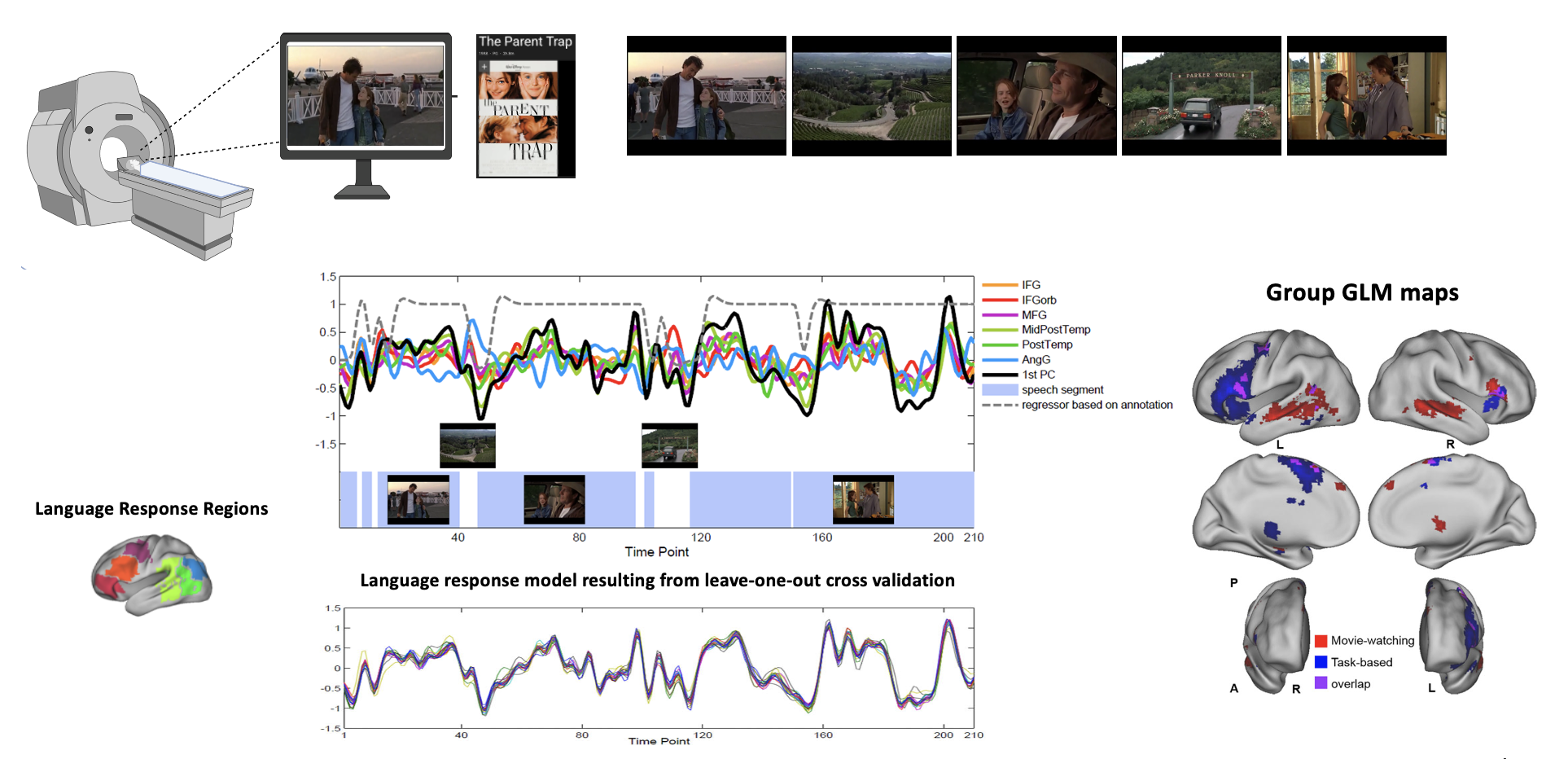- Naturalistic stimuli are the rich, multimodal, and dynamic stimuli that represent our real-world experience, including videos, audios, virtual reality scenes, etc.
- Movies, with their dynamic and contextual content, have been shown to engage the distributed, multimodal brain networks that support sensory, cognitive, and social functioning in real life.
- Naturalistic stimuli can evoke more naturalistic patterns of neural response than the unimodal and static stimuli used in controlled lab experiments, and have been adopted in neuroimaging studies, such as fMRI, EEG, and MEG studies, to investigate how our brains work in real life.
- We performed a feasibility study of using movie-watching fMRI for mapping individual healthy subjects’ language networks using a 7-min clip from the movie “The Parent Trap”.
- Using the same 7-min movie clip, we successfully identified individual patients’ language areas. We also compared the results of task, resting-state, and movie-watching fMRI in a cohort of patients with brain tumors.
Movie-fMRI Analysis using Hypothesis-driven GLM Approach

Results of Movie-fMRI in Patients – Comparing Movie-fMRI Language Components with Task and rs-fMRI Maps

Example patients’ language maps: movie-watching (red), resting-state (green), and task-based fMRI (blue)
